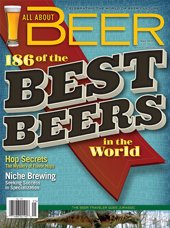Doppelbock
The Paulaner brewery of Munich can lay claim to the creation of doppelbock as a style. A group of Italian monks from the order of St. Francis of Paula crossed the Alps and settled near the city of Munich. Devout Catholics, they followed their traditions religiously (excuse the pun), which meant fasting occasionally. Solid food was verboten, but liquid, not. As the monks were expert brewers anyhow, making a brew that sustained them during these periods of dubious abstinence was a logical choice. Strong and nutritious fit the bill perfectly, providing sustenance both physical and mental.
Strong beer, brewed with local Germanic influence, resulted in what is now doppelbock. The monks established the Paulaner brewery in 1634 (coincidently, not long after Herr Pilcher from Einbeck visited Munich). Their beer became available to the public in 1780. The beer was named Salvator (The Savior) for obvious reasons, and it carries that moniker to this day. As the beer became popular, other breweries in Bavaria brewed it with great success and adopted the “-ator” suffix for their own versions.
Doppelbock literally means “double bock” but it isn’t really twice the strength of traditional bock, only marginally stronger. Doppelbocks are generally dark in color, from dark amber to dark brown, though some pale versions exist. A beer can be considered a doppelbock if its original gravity is no lower than 1.074, which ensures a beer of substantial strength and character.
Doppelbocks are quite complex. As there is virtually no hop flavor and aroma, and just enough hop bitterness to be detectable, virtually all of this style’s character can be attributed to its Munich-style malt and brewing practices. Munich malts are darkened from some extra kilning and they are also rendered less fermentable, resulting in a full-bodied, dextrinous wort. The character of these flavorful malts is augmented by using time-consuming, complicated decoction mashing techniques.
Decoction mashing was the method employed before thermometers were available. It consists of raising the mash temperature through its critical stages by boiling a little of the mash at a time and re-mixing it with the main portion. Repeated several times, this ensures that the all of the enzymes are able to do their job. The extra boiling, both during decoction and in the kettle, results in caramelization and a myriad of other complicated chemical reactions that benefit the wort and ultimately the flavor of the finished beer. All of this adds up to a complex, rich brew with unparalleled malt character.
Fermentation is done slowly, as with bottom-fermenting beers, and the lagering period is lengthy, often several months in duration.
Doppelbocks are not hard to find if you have a good package store and unrestricted beer laws. The majority of bocks available are, in fact, doppels. All of the major Bavarian breweries produce a doppelbock. All are good, some are excellent. Depending on local distribution, look for Spaten, Ayinger, Paulaner, Tucher and other brands with -ator in their name. Like other bocks, these are diverse, some relying solely on lighter malts, others on an influential dose of dark malts. The darker ones have distinct caramel and chocolate notes and sometimes a faint roastiness, whereas the amber versions have a slick, clean malt palate and a little less complexity.
Some breweries really push the envelope when it comes to strength. Most doppelbocks fall in the 7 to 8.5 percent ABV range but some are significantly higher. Coming in at 9.6 percent ABV is Urbock 23 from the Eggenberg brewery of Austria, established in 1681. The designation “23” refers to its original gravity in degrees Plato, roughly a 1.092 specific gravity. It is very pale, pure tasting and honeyish.
Stronger still is a product from the Hürlimann brewery in Zurich known as Samichlaus. Insanely strong at about 15 percent ABV, and with a starting gravity of about 1.120, it is brewed but once a year, on St. Nicholas Day, December 6. After fermentation, it is lagered until the following St. Nick’s day, when it is released just in time for winter. Reddish brown in color, and rich beyond description, it retains a smooth lager character despite its potency. This beer will keep for quite some time, so if you are lucky enough to find some, cellar it.













